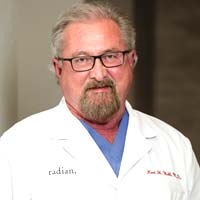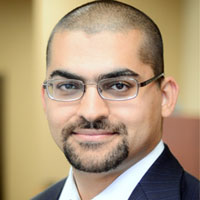Hair Transplants Become a ‘Thing’: Worldwide Increase in Hair Restoration Surgery Reported
Trends have a way of catching on even quicker today thanks
to the good old Internet. When something is good - or bad - it only takes a
short time before people across the world
know about it. If you consider to boundless reach of social media and
information available online, it's not hard to believe this fact.
It was only a matter of time then that hair transplant
surgery and all of the great strides it's been making went viral and got
attention across the world. Now, new survey
results are in and they show that the number of hair
transplant procedures happening across the world has gone up eighty-five
percent in almost a decade.
A member survey conducted by the International Society of
Hair Restoration Surgery (ISHRS) since 2004 looked at trends in hair
restoration from around the globe. It has noticed that while both men (86.3% in
2012) and women (13.7% in 2012) were now getting hair transplants, the biggest
jump in overall procedures performed was happening in Asia and the Middle East.
In Asia, 102,702 hair restoration procedures were done in 2012. This number
represented at 10% increase from 2010.
The ISHRS 2013 Practice Census survey also showed that even
with a weaker economy during those years, people we’re still opting to improve
their appearances and get hair restoration surgery. From 2010 to 2012 there was
an overall 10 percent increase in the number of people across the globe having
the hair transplant procedure done - totaling 310,624 procedures.
As far as market value goes, the survey also calculated and
estimated procedure price times the market size and found some grand numbers
for the market in various countries. The U.S. market size was estimated to be $
1,931,599,813 (USD) in 2012 while Europe reached € 1,493,706,135 (EUR) in 2012.
Other notable regions in the study included Japan with ¥
14,995,975,147 (JPY) and the Middle East with ? 107,343,869,229 (INR).
“Hair is universally viewed as a sign of youth and vitality,
which is why hair loss at any age can have a significant impact on a person’s
overall quality of life,” said Vincenzo Gambino, MD (Milan, Italy), president
of the ISHRS. “To combat hair loss, more men and women are turning to hair
restoration surgery – especially those in their 30s and 40s – because the
results are permanent, natural-looking and virtually undetectable.”
Speaking of age, the study found that over half of the
people opting for hair transplants in 2012 were between the ages of 30-49.
Perhaps signaling an innate desire to gain back youth or keep the fountain
refreshed, rather than aging or changing our looks with less - or no hair.
Not just the scalp has gotten all of the attention either. While facial hair
transplants have really exploded lately with the hipster trend, and the look of
full eyebrows has become so hot- even back in 2012 there were already people
opting for these kinds of hair transplant procedures. From 2010-1202 13.1% of
surgeries were done on the eyebrow and face.
Perhaps what are really catapulted hair transplants into the limelight is not
only the more natural results and lower price point, but also the celebrities
who continue to influence style and trends in society. For a fun spin on
things, ISHRS members who were surveyed also said Prince William was a
celebrity they most would like to have a hair transplant and they chose John
Mayer as the male celebrity with the best hair while Sofia Vergara was chosen
as the female celebrity with the best hair.
Click
here for a full reprint of the ISHRS 2013 Practice Census Report
Hairfear - 06-18-2015
Frequently asked questions about hair transplant procedures
How much does a hair transplant cost?
Hair transplants can vary in price based off of the area in the world that you are interested in getting a hair transplant as well as the size of the area where you may need a hair transplant. Experienced doctors in the United States will often charge some of the highest prices for a hair transplant worldwide and this is why so many travelers make the move to other parts the world like Turkey, India, Thailand, Mexico...etc for their hair transplants.
Will a hair transplant hurt?
Although hair transplants may look like a particularly
unpleasant or painful experience is actually very little discomfort involved
with the surgery itself. Hair transplants are always done under an anesthetic so there's absolutely zero pain during the treatment itself. Many people actually relate the process as being very similar to going to the dentist for filling or root canal. Mild pain can persist over the course of postop treatment but he generally just resumes for a few days.
Who can deliver the best surgery?
It's usually best to consider working with surgeons who have and IAHRS certification or international alliance of hair restoration surgeons recognition. IAHRS can often deliver recommendations for the best surgeons in each particular area.
Is this scarring noticeable?
Any type of hair transplant will require the use of incisions throughout the scalp. There can also sometimes be a small scar from the donor area towards the back of the scalp. Asking to look at photos of the surgeon's previous work will help you to see roughly how bad the scarring could be. In most cases an experienced professional can limit the look of scarring and noticeable marks from the surgery.
How long does it take for the hair to grow?
In most cases hair growth will start within eight months and you can start to see a full effect from the hair transplant after a full year. The initial signs of growth can usually start between 3 to 4 months after the surgery.
Are the results permanent?
The hair follicles that are transplanted are generally the ones which are genetically resistant against the symptoms of baldness. As long as you receive hair loss treatment later in your life after the symptoms of balding have started to subside, you can have a better chance at permanent results.
While everyone know you've had surgery?
If you want to limit the chance that people may find out about your surgery it's important to give at least three weeks of healing as the surgical area will be affected and red just after surgery. After around a month of healing it can look far less noticeable. You could consider wearing a hat while time passes or opting for some extra time off if possible.
How long should I rest after surgery?
It's recommended to rest for at least a few days after surgery so that your body can recover. Trenton to over exert yourself and limit sexual activity, running in the gym for around 10 days after surgery.
Is it possible to lose more hair as a result of surgery?
There is always a chance of shock loss which happens when the hair is weak and miniaturizing after the surgery. As long as the surgeon is choosing the correct hair follicles and performing the surgery well it's possible to minimize the chance of this happening however.
Will I need another hair transplant?
The need for another transplant really depends on the individual. With a solid foundation surgery and working to potentially bolster results with drug therapy, you can improve the stability of the hair that was transplanted as well as prevent further loss. Getting a hair transplant early
on in your 20s or early on in life could lead to needing long-term transplants as hair loss can be progressive.







